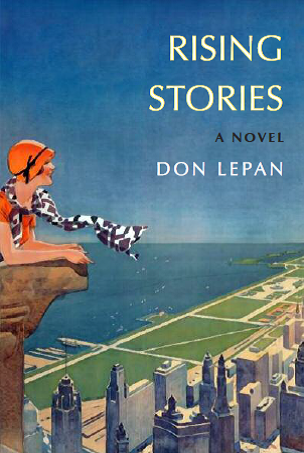Of all the mistaken notions about tourism and the economic health of communities, the most egregious are surely those relating to cruise ships. It’s now widely recognized that the cruise ship hordes descending on Venice and other tourist magnets have had considerable adverse effects. Cruise ship tourists usually eat as well as sleep on their cruise ships. They stay in the city being visited for only very brief periods and tend to spend little—and when they do spend, it tends to be on cheap souvenirs, not on anything that supports a healthy and sustainable economy. That’s why Venice finally started to say no to cruise ships a few years ago—and why a growing number of North American cities (including Monterrey California and Charleston, South Carolina) are doing the same. But some cities that haven’t yet suffered from cruise ship hordes continue to spend substantial amounts trying to attract just those sorts of tourists.
A case in point is Nanaimo, a much smaller center than nearby Vancouver and Victoria, with far fewer of the sorts of attractions that are likely to attract cruise ship tourists. Nanaimo has a charming, historic downtown core that has for years been struggling. It badly needs to have more resources devoted to making the downtown more inviting—by addressing the issues of homelessness and drug use, by increasing the residential population of the city core, but also by supporting downtown businesses and creating more by way of permanent attractions to entice both locals and visitors (business visitors as well as tourists who may stay several days rather than just a few hours) to spend more time and more dollars in downtown Nanaimo. The city lacks a downtown movie theatre, and it lacks any distinctive attraction; it would be a perfect location, for example, for a Marine Museum that would showcase historic ships (much as Squamish has managed to attract visitors with its Mining Museum). But instead of supporting those sorts of initiatives, the city has stuck with a failed strategy of trying to lure cruise ships to its harbor. In the early years of this century it persuaded the federal government to spend $20 million on a cruise ship terminal. The terminal has never attracted more than a handful of cruise ships a year, and it has attracted none at all since 2019. Nanaimo Cruise Development Manager Andrea Thomas recently trumpeted the news that two small cruise ships would visit Nanaimo in 2024 (https://www.nanaimobulletin.com/local-news/two-cruise-ships-will-set-course-for-nanaimo-this-year-7333193). “We’re starting over again, really,” she said, “and it’s a great opportunity to show what Nanaimo is and what we can do and who we are and why we’re great and why we have a unique product offering in terms of, not specifically the port, but the city itself and the excursion opportunities” to sites such as Cathedral Grove and Vancouver Island wineries. But none of that makes any sense. First of all, no city should, as late as 2024, be “starting over again” after the pandemic. According to today’s Globe and Mail, the city of Vancouver hosted “a record number of cruise ships in the summer of 2023.” The first cruise ship to visit Vancouver after the pandemic did so in early April, 2022. In other words, Vancouver “started over” more than two years ago. And the “excursion opportunities”? The cruise ship tourists visit for a few hours, not for several days; winery tours or trips to Cathedral Grove are not an option.
How much money does Nanaimo now spend in trying to attract cruise ships and on providing services for the very, very few cruise ships that have visited? I would love to see the numbers—but however much is being spent, it’s hard not to think that the money could be better spent in other ways. Mayor Leonard Krog and the current city council have taken some important steps in recent years to make the city in general and the city core in particular more attractive to locals and visitors alike. To pick just three examples, they’ve helped to bring a baseball team to the city (and revitalize the stadium); they’ve facilitated the start-up of a successful foot ferry between downtown Nanaimo and downtown Vancouver (as it turns out, a much better use for the harbor terminal than the hoped-for cruise ships); and they have successfully encouraged more residential construction in the city core. But much more is needed—and spending money on trying to attract cruise ships is part of the problem, not part of the solution.
Thursday, April 4, 2024
Subscribe to:
Posts (Atom)




